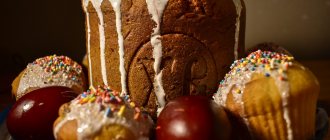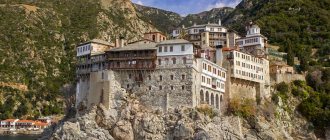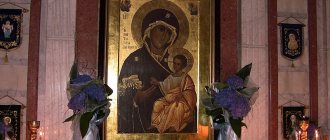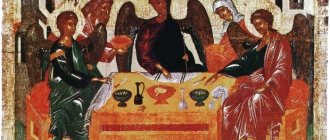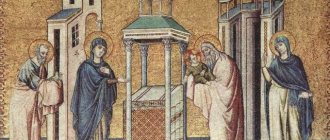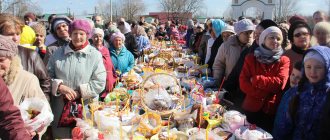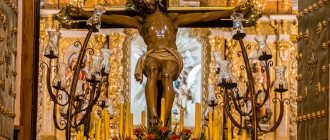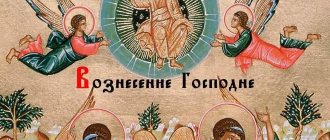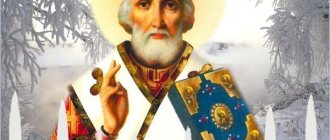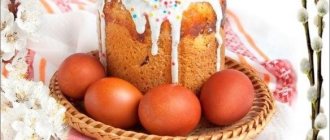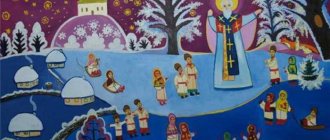Easter is the most important holiday for Christians. People associate many rituals and traditions with it. It is generally accepted that if a person is a deeply religious person, he will be able to ask God to fulfill his deepest desire. Not all rituals can be performed during this period. Let's consider which Easter rituals are allowed to be performed, and which ones can, on the contrary, lead to trouble.
history of the holiday
The holiday does not have an exact date, since the time of celebration is set by the church. However, it is known that Easter began to be celebrated at the end of the tenth century. Most often, the celebration falls from the first days of April to the first days of May.
It so happened historically that the holiday became a tradition that came to us from Passover (a holiday that came to us from the ancient Jews). It symbolized the onset of spring and the awakening of all life in the world. It was believed that on this day any person could become free and gain dignity.
Passover in the scriptures was defined as the great procession of the Jews, led by Moses.
Orthodox celebration traditions differ from Jewish ones. Preparations for Easter begin a week in advance; this period is called “Holy Week.” It ends with the preparation of a large amount of food, which is taken to the Temple. When the evening service takes place, people return home and eat food starting with the one that was blessed. Among the most popular dishes are krashenka, baked Easter cakes and cottage cheese. The largest number of rituals are associated with baked goods and eggs.
What about Easter cakes?
© CC0 Public Domain
This is a fairly high-calorie product, rich in fast carbohydrates, which means it is easily deposited around the waist.
“If we look at the problem a little more broadly, then the issue is not so much in the Easter cake itself, but in its quantity. A healthy, balanced diet includes up to 10% of various types of simple carbohydrates, and this is completely harmless to both health and figure. In other words, the average person can safely afford a small piece of Easter cake on Easter. If we talk about specific weight, it’s about 30-50 g depending on the recipe, that is, 150-170 kcal,” noted Olga Shestakova.
Not everyone will want to limit themselves - as a result, baking can be made a little more healthy. In this case, you should give up sugar, because raisins are already sweet, or use less. According to the nutritionist, premium flour should be replaced with whole grain flour. If desired, add cottage cheese - this will enrich the product with high-quality protein.
“I would advise using sugar substitutes in baked goods with caution, since some of them change their structure after heat treatment,” the expert concluded.
Nikita Strogoff
Main rituals for Easter
The most striking symbol of Easter is a painted egg, sometimes it is painted with patterns or decorated with special stickers. In Christianity, dyes symbolize victory over death. Most often they are painted red, which reminds us that Christ shed his blood for the salvation of the human race. They were necessarily taken to the temple to be blessed and eaten first of all at the morning meal.
Another ritual of Easter was washing with holy water. Gold and silver jewelry and painted eggs were placed in it. It was believed that such actions would bring health, luck and wealth in the coming year. Mothers used eggs painted red to perform a ritual of protection for their children. They rolled the egg on the child's hands and face.
Another interesting Easter tradition was observed by musicians and singers. They went out into the street, gathered in groups and sang special songs as they walked along the street. With them they wished the local residents the blessings of life and a good harvest in the coming year. In response, people brought them cooked food. Such an exchange promised prosperity for the entire coming year and protection from harm. Some girls used Easter omens to get married.
Pagan rituals and customs of Easter
In the celebration of Easter, not only Christian, but also pagan rituals are surprisingly combined. For example, lighting fires. Previously, they were lit near temples and on hills in populated areas. This action had a mandatory condition - the fire had to be lit only from live fire, that is, it had to be created by rubbing sticks. When the fire burned out, its remains were collected and placed under the roof. This served as a talisman against thunderstorms.
Water was also endowed with protective powers. She had to dial it at dawn and return home without saying a word. The power of such water was compared to that which was consecrated in the temple. The corners of the home were blessed with water to protect themselves from misfortunes.
Easter traditions include watching the morning sun. Based on it, they made an assumption about what the coming year would be like. If it rose in a clear sky, then there would be a lot of harvest, and the family promised prosperity and good health. If the luminary was covered by clouds, this upset the inhabitants, because such a phenomenon promised a lack of harvest and the inability to continue the family line.
Particular importance was attached to the ringing of bells. When the bells rang, you had to wash yourself from the springs. They believed that such an action would help get rid of freckles and make a person even more beautiful.
Since it was believed that painted Easter eggs helped the deceased go to heaven, people went to the cemetery to “christen themselves” there. After this, the egg was given to the birds. A bird that eats an egg will definitely convey a request for help to God. The egg given by the priest had special power. It could protect the home from fire. But if it did happen, the house had to be walked around three times; according to another version, the egg had to be thrown into the fire. The fire will go out only if a person leads a righteous lifestyle. Such eggs were also used to find lost livestock and treasure.
Jerusalem
The first place where God's Spirit dwelt, and now stands the tomb of Jesus. The center of three world religions and all Christian denominations. Tens of thousands of pilgrims from all over the world flock here to worship and pray for the sending of the Holy Fire.
Throughout the entire Easter Orthodox week in Jerusalem, every tree and bush blooms and smells fragrant. The flowering then wilts due to heat and dryness.
Multiethnic believers fill the Church of the Holy Sepulcher on Holy Saturday. Everyone has a candle in their hands. They wait for the sacred flame to blaze in the chapel erected above the tomb. Its doors are sealed, and the seal will be removed only with the arrival of the Greek patriarch, who brings 33 candles here - this is how old Jesus was at the time of the crucifixion and subsequent resurrection.
Only after the prayer of the Orthodox priest does the fire descend to the believers. Its harbingers are the glow on the walls of the domed chapel, the solemn ringing of bells. The flame initially spreads around the patriarch without damaging him, and then the tongues of the patriarchal candles spontaneously ignite. He passes it on to the believers - everyone rushes to light their candle bundle.
The fire, bringing truth and peace, is delivered to Russia by plane by delegates from the Andrei Privozdanny Foundation. They carefully hand it over to the Patriarch of Moscow and All Rus' in the Cathedral of Christ the Savior, and then it spreads throughout the country - between parishes.
Signs from drawings on eggs
The most important ritual before Easter is coloring eggs. Of course, the easiest way is to paint them using a special paint in which the eggs are dipped for a few minutes. But you can get creative with this process.
You can stick pictures on the shell or even apply patterns or symbolic patterns yourself. Certain symbols carry specific meanings.
What images can be applied to eggs:
- in order to make one’s health strong, they draw a pine tree;
- The image of a tree, preferably an oak, allows you to restore both spiritual and physical strength;
- the drawn grid represented fate;
- the yellow mesh attracted good luck and was associated with the warmth of the sun;
- an egg decorated with dots symbolized prosperity;
- the image of a berry personified family values and readiness for motherhood;
- You can show integrity and spiritual purity by drawing any flower.
You can do it differently and paint the egg any color and draw exactly the symbol or design that you think brings you happiness. The most important thing is to sincerely believe that the drawn symbol has magical properties.
Easter - rituals and traditions
And these are yet another rituals associated with Easter, baking, eggs and the holiday table in general...
These include:
- It is advisable to give holiday food to those who need it. Such actions are very important and highly valued on this day.
- Do not throw leftover food and eggshells into the trash. It is better to collect everything in a separate bag and bury it in the ground. It is impossible for the remains to lie on the ground and for people to trample on them.
- A painted egg that has been blessed is used for protection. They roll it over a person’s hands and face to ensure health for the whole coming year.
- If there is a corner in which the icons are placed, several eggs and Easter cake should be placed there. They need to be stored there throughout the year. It’s better to put some honey there and put candles purchased in the temple. It is generally accepted that this is how we remember the dead.
- The issue of funerals must be approached with caution. You shouldn’t do this on Easter; Radonitsa is more suitable for this. It occurs on the second Tuesday after Easter.
- Peculiarities of celebrating Easter, traditions, rituals, and attributes of the holiday imply a gathering of the whole family at the table. Before going to visit friends, you need to spend at least an hour at the table.
- An important tradition. When gathering at the table, the spouses should be the first to break the eggs. Whose egg remains intact will be the master of the house for the coming year.
China
Christianity among Buddhism, Taoism, Confucianism, widespread in China, is small. They make the sign of the cross mainly in Shanghai (the largest community), Heilongjiang Province and the capital of the state.
And even though there is no official holiday in China for the Easter holiday, traditions are respected. Believers mostly flock to Beijing for Easter services. Here, on the territory of the Russian consulate, the Church of the Assumption of the Blessed Virgin Mary and the Red Fanza named after. Saint Innocent of Irkutsk. All parishioners cross the church threshold only with a passport - the names of those wishing to do so are included in the list in advance.
Islands of Christian love are also located in the Xinjiang Uygur Autonomous Region (St. Nicholas Church), in Urumqi and two in Harbin.
A decorous theatrical performance based on “biblical chronicles” is staged in church courtyards, and priests teach Orthodoxy lessons to children in Sunday schools. Embassy workers treat the Chinese to Russian Easter pickles - the tables are set right on the embassy premises.
A home meal in mainland China is modest and orderly (more like a family weekend tea party) with hand-made treats - in China they do not sell Easter cakes, dyes or thermo-seals for eggs.
But in Hong Kong, Easter is included in the list of public holidays with a four-day weekend. Children frolic on playgrounds in parks, slamming eggs and rolling them between tasty obstacles - everything that is knocked down is collected in a basket decorated with embroidery (in ethnic and biblical motifs) and spring flowers. Adults gather in large groups in restaurants, breaking their fast with fortified Cahors, sausages dipped in soy sauce and meat dishes.
Table decoration
Easter includes traditions and customs associated with the table, but in this case not with dishes, but with decoration and serving. Since the holiday falls in the spring, it is advisable that a bouquet of fresh flowers or a woven wreath be placed at the head of the table. You can place flowers in a prominent place in the house.
For a bouquet or wreath, it is better to use wildflowers. The truth of the holiday is that we pay tribute to God, and not in a luxurious way. With simple actions we show the joy of spring, which has defeated the harsh winter. A person should behave modestly and be simple.
India
Indian Christian communities (Protestants and Catholics) are small, but Easter is noticeable among national festivals - religious solemnity prevails.
Believers on Easter Sunday go to the temple for the sacred Hindu ritual prayer service “Request for forgiveness of sins” - a daytime service. The state of Goa hosts a vibrant festival called the Way of the Cross. Festively dressed people march along the “path to Golgotha” to the sounds of an orchestra, accompanying a wooden cross from the threshold of the church to the symbolic place of the crucifixion.
For two weeks, Indian Christians participate in street performances, dance and sing Easter hymns, inviting non-Christians and simply curious spectators to the celebration.
The most common Easter gifts for Hindus are Easter lanterns painted in all the colors of the rainbow, natural and artificial flowers. Ritual eggs and sweets are not prepared - they are bought.
Meals are traditionally family meals. But the festive dishes are served in an original way - on banana leaves. Hindus prefer creamy Rasa Malai - curd balls, sweets Pista Barfi - milk with pistachios, rice-lentil pancakes with ginger sauce, tandoori chicken.
The modern world willingly weaves religious holidays into secular life. And a worldly person, far from confessions, religious processions, night vigils in churches, joyfully participates in Easter traditions, willingly using symbols and eating ritual dishes. The Holy Resurrection of Christ is an unchanging triumph that unites the Christian world and all believers.
What is forbidden to do on holiday
When Easter arrives in 2022, signs will help you have a fun holiday. But there are also actions that should not be done on this holy holiday. Most of the cases presented can be independently controlled.
What you need to do to avoid bad consequences:
- On Easter morning it is better to wake up as early as possible. The holiday begins early in the morning, so you can’t spend a long time in bed or even until lunch. It is considered a bad omen if you oversleep during the service. It is advisable to go to the temple in the morning and soak up the festive atmosphere. You can consecrate food so that it decorates the holiday table.
- Drinking alcohol is not advisable. Yes, you can drink Cahors, but you can’t overdo it. The holiday should be spent in a sober state. Alcohol will spoil the celebration and affect your health.
- You cannot go to the cemetery or clean graves. The ban cannot be called strict, but we must not forget that Easter is a symbol of resurrection. The best solution would be to wait for Radonitsa, which will arrive in nine days.
- On this day you need to forget about greed. Save on table setting and food purchases, and don’t forget about gifts for loved ones. Be sure to give alms in church and some of the food you bring should also be left there. Don't worry about not having enough money for additional expenses.
Orthodox Life
There is probably no person on earth who has not heard about the death and resurrection of our Lord Jesus Christ. But, while the very facts of His death and resurrection are so widely known, their spiritual essence, their inner meaning is the secret of God’s wisdom, justice and His infinite love. The best human minds bowed helplessly before this incomprehensible mystery of salvation. Nevertheless, the spiritual fruits of the Savior's death and resurrection are accessible to our faith and tangible to the heart. And thanks to the ability given to us to perceive the spiritual light of Divine truth, we are convinced that the incarnate Son of God actually voluntarily died on the cross to cleanse our sins and was resurrected to give us eternal life. Our entire religious worldview is based on this conviction.
Now let us briefly recall the main events associated with the resurrection of the Savior. As the evangelists narrate, the Lord Jesus Christ died on the cross on Friday, about three hours after lunch, on the eve of the Jewish Passover. That same day in the evening, Joseph of Arimathea, a rich and pious man, together with Nicodemus, took the body of Jesus from the cross, anointed it with fragrant substances, wrapped it in linen (“the shroud”), as was customary according to Jewish traditions, and buried it in a stone cave. Joseph carved this cave into the rock for his own burial, but out of love for Jesus he gave it up to Him. This cave was located in Joseph's garden, next to Golgotha, where Christ was crucified. Joseph and Nicodemus were members of the Sanhedrin (the supreme Jewish court) and at the same time secret disciples of Christ. They blocked the entrance to the cave where they buried the body of Jesus with a large stone. The burial was carried out hastily and not according to all the rules, since that evening the holiday of the Jewish Passover began.
Despite the holiday, on Saturday morning, the high priests and scribes went to Pilate and asked him for permission to assign Roman soldiers to the tomb to guard the tomb. A seal was applied to the stone that covered the entrance to the tomb. All this was done out of precaution, since they remembered the prediction of Jesus Christ that He would rise on the third day after His death. So the Jewish leaders, without suspecting it themselves, prepared irrefutable evidence of the resurrection of Christ that followed the next day.
Where did the Lord dwell with His soul after He died? According to the belief of the Church, He descended into hell with His saving sermon and brought out the souls of those who believed in Him (1 Pet. 3:19).
On the third day after His death, on Sunday, early in the morning, when it was still dark and the soldiers were at their post at the sealed tomb, the Lord Jesus Christ rose from the dead. The mystery of the resurrection, like the mystery of the incarnation, is incomprehensible. With our weak human mind, we understand this event in such a way that at the moment of resurrection the soul of the God-man returned to His body, which is why the body came to life and was transformed, becoming incorruptible and spiritualized. After this, the resurrected Christ left the cave without rolling away the stone or breaking the high priestly seal. The soldiers did not see what happened in the cave, and after the resurrection of Christ they continued to guard the empty tomb. Soon an earthquake occurred when the Angel of the Lord, descending from heaven, rolled away the stone from the door of the tomb and sat on it. His appearance was like lightning, and his clothes were white as snow. The warriors, frightened by the Angel, fled.
Neither the myrrh-bearing wives nor the disciples of Christ knew anything about what had happened. Since the burial of Christ was carried out hastily, the myrrh-bearing wives agreed on the day after Easter, that is, in our opinion, on Sunday, to go to the tomb and finish anointing the Savior’s body with fragrant ointments. They did not even know about the Roman guard assigned to the coffin and the seal attached. When dawn began to appear, Mary Magdalene, Mary of Jacob, Salome and some other pious women went to the tomb with fragrant myrrh. Heading to the burial place, they were perplexed: “Who will roll away the stone from the coffin for us?” - because, as the Evangelist explains, the stone was great (Mark 16:3). Mary Magdalene was the first to come to the tomb. Seeing the coffin empty, she ran back to the disciples Peter and John and informed them about the disappearance of the Teacher’s body. A little later, the other myrrh-bearers also came to the tomb. They saw a young man in the tomb, sitting on the right side, dressed in white clothes. The mysterious young man said to them: “Do not be afraid, for I know that you are looking for Jesus who was crucified. He has risen. Go and tell His disciples that they will see Him in Galilee” (Mark 16:6, 7). Excited by the unexpected news, they hurried to the students.
Meanwhile, the apostles Peter and John, having heard from Mary about what had happened, ran to the cave: but, finding in it only the shrouds and the cloth that was on the head of Jesus, they returned home in bewilderment. After them, Mary Magdalene returned to the burial place of Christ and began to cry. At that time, she saw two angels in white robes in the tomb, sitting - one at the head, the other at the feet, where the body of Jesus lay. The angels asked her: “Why are you crying?” (John 20:15). Having answered them, Mary turned back and saw Jesus Christ, but did not recognize Him. Thinking it was the gardener, she asked: “Sir! If you have carried Him out (Jesus Christ), then tell me where you have put Him, and I will take Him.” Then the Lord said to her: “Mary”! (John 20:16). Hearing the voice and turning to Him, she recognized Christ and exclaimed: “Teacher!” threw herself at His feet. But the Lord did not allow her to touch Him, but ordered her to go to the disciples and tell about the miracle of the resurrection.
That same morning, the soldiers came to the high priests and informed them about the appearance of the Angel and the empty tomb. This news greatly excited the Jewish leaders: their anxious premonitions were fulfilled. Now, first of all, they had to make sure that the people did not believe in the resurrection of Christ. Having gathered a council, they gave the soldiers a lot of money, ordering them to spread a rumor that the disciples of Jesus stole His body at night, while the soldiers were sleeping. The soldiers did just that, and so the rumor about the theft of the Savior’s body then lingered among the people for a long time.
On the first day of His resurrection, the Lord appeared several times to His disciples, who were hiding from persecution individually and in groups in different parts of Jerusalem. According to church tradition, Christ first appeared to His Mother, thereby comforting Her maternal grief. Then the Lord appeared to the other myrrh-bearing women, saying to them: “Rejoice!” (Matt. 28:9). The myrrh-bearing wives hastened to share this joyful news with the other apostles. On the same day the Lord appeared to the apostle. Peter and two disciples - Luke and Cleopas, who were going to Emmaus. In the evening He appeared to all the apostles who had gathered to discuss the rumors about His resurrection. Fearing the Jews, the apostles locked themselves in one of the houses in Jerusalem (According to legend, in the “Upper Room of Zion”, where the Last Supper was celebrated and where, seven weeks after Easter, the Holy Spirit descended on the apostles).
A week after this, the Lord again appeared to the apostles, including St. Thomas, who was absent at the first appearance of the Savior. To dispel Thomas’s doubts regarding His resurrection, the Lord allowed him to touch His wounds, and the believing Thomas fell at His feet, exclaiming: “My Lord and my God!” (John 20:28). As the evangelists further narrate, during the forty-day period after His resurrection, the Lord appeared to the apostles several more times, talked with them and gave them final instructions. Shortly before His ascension, the Lord appeared to more than five hundred believers.
On the fortieth day after His resurrection, the Lord Jesus Christ, in the presence of the apostles, ascended into heaven and since then He has been at the “right hand” of His Father. The apostles, encouraged by the resurrection of the Savior and His glorious ascension, returned to Jerusalem, awaiting the descent of the Holy Spirit on them, as the Lord promised them.
